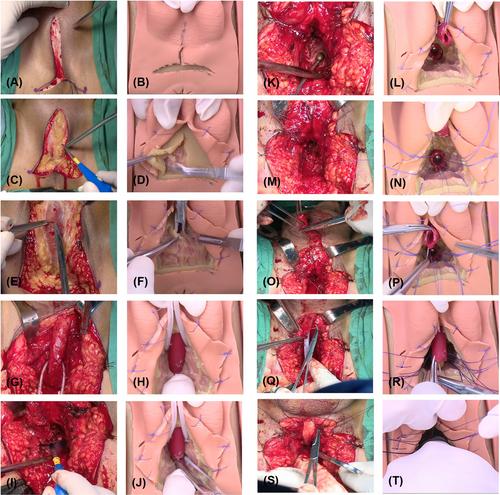This study aimed to report a newly developed, high-fidelity synthetic simulator to simulate excision and primary anastomotic (EPA) bulbar urethroplasty and its clinical use for new practitioners in shortening the learning curve.
The bulbar urethral anastomosis simulator consists of several standardized components created according to the actual size of the male patient. Interns, novice residents, and fellows inexperienced with urethral reconstruction (n = 10, 5, 5) from different medical centres were invited to participate in the training programme. Two reconstructive urology experts monitored each practice. Following the training, three kinds of validity testing were used to assess the simulator: face, content, and construct. In the intern group, the task performance in the first five training sessions and the last five training ones were compared using a self-control approach. In the resident and fellow group, the real surgical data, including estimated blood loss, operative duration, and 6-month post-operative success rate of trainees after training, are plotted, which are compared with that of reconstructive urology experts (n = 5) included retrospectively to study the effectiveness of the simulator in shortening the learning curve.
The overall mean satisfaction rate for the simulators was inspiring and evaluated by experts. In the intern group, significant improvement can be achieved through 10 training sessions (p < 0.05). In clinical practice, the intraoperative indicators and surgical success rate of both the training groups showed the tendency to close or even better than those in the expert group. In terms of the learning curve, training groups performed better compared with experts in the early stages of their careers.
In conclusion, this synthetic training simulator for bulbar urethral anastomosis is novel, effective, and convenient for beginners of different groups. The training course can bridge the gap between preclinical use and actual surgery via this simulator.


